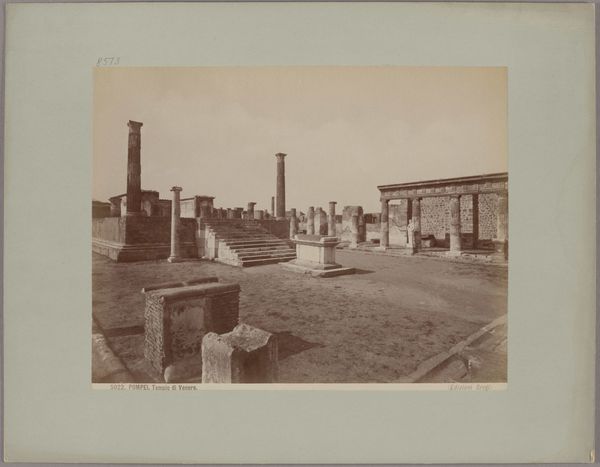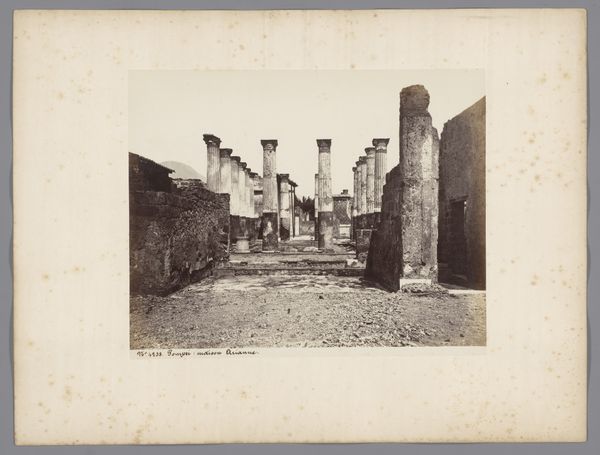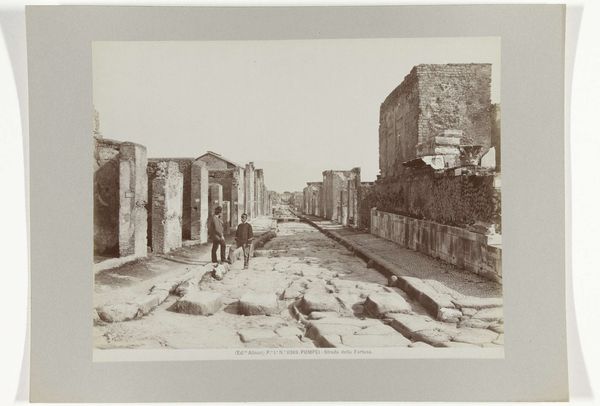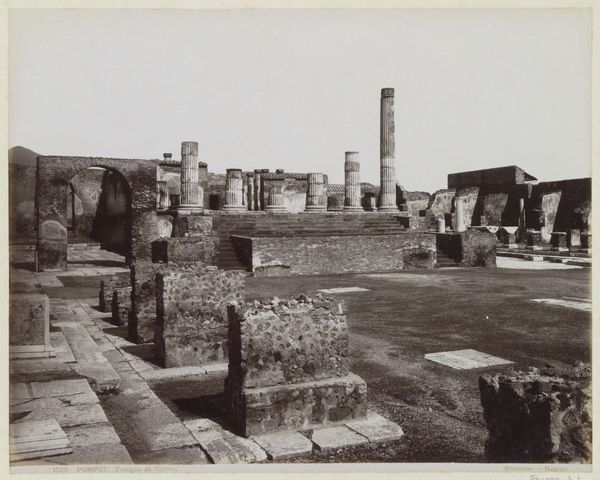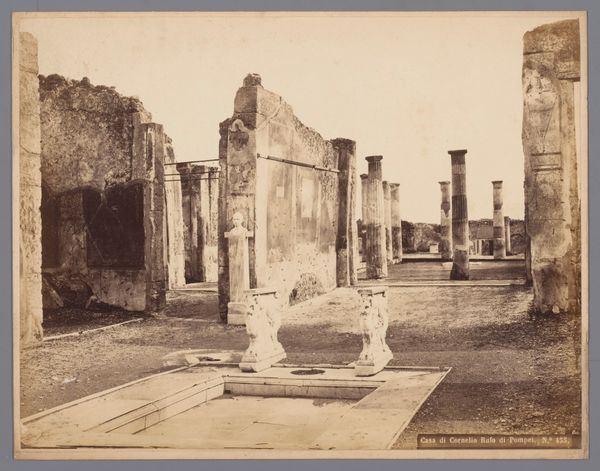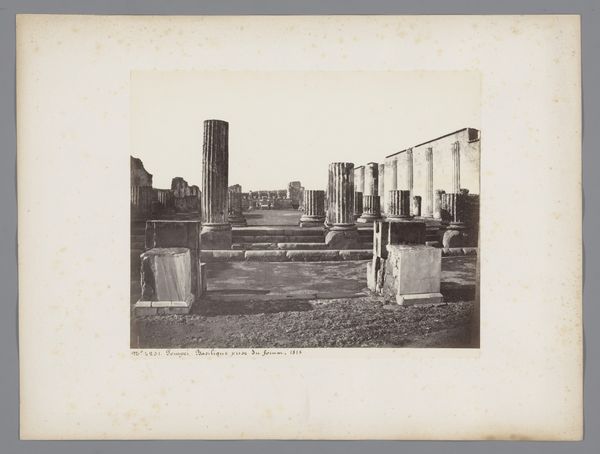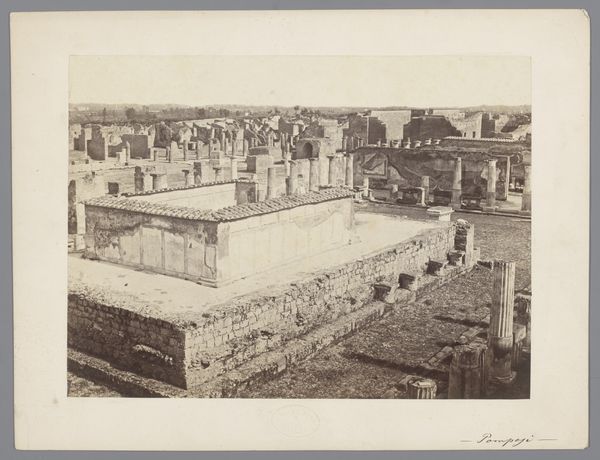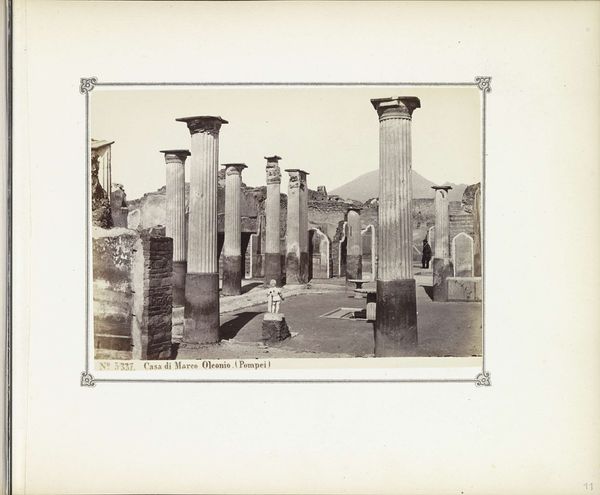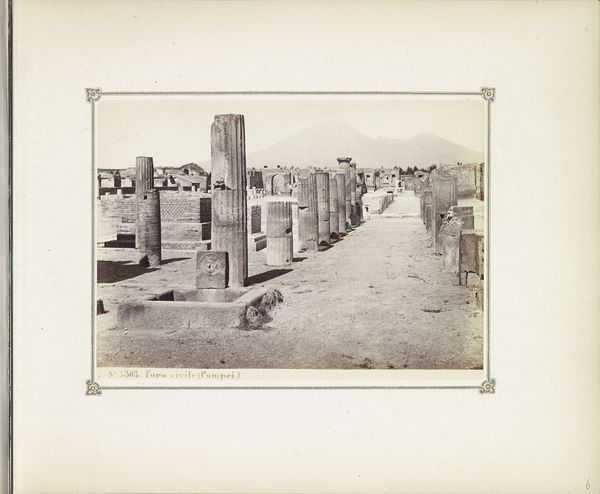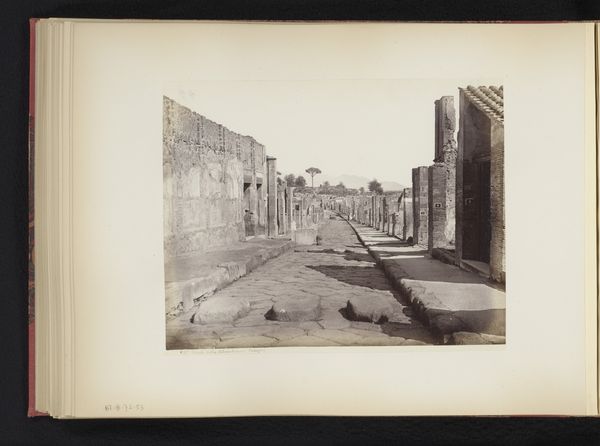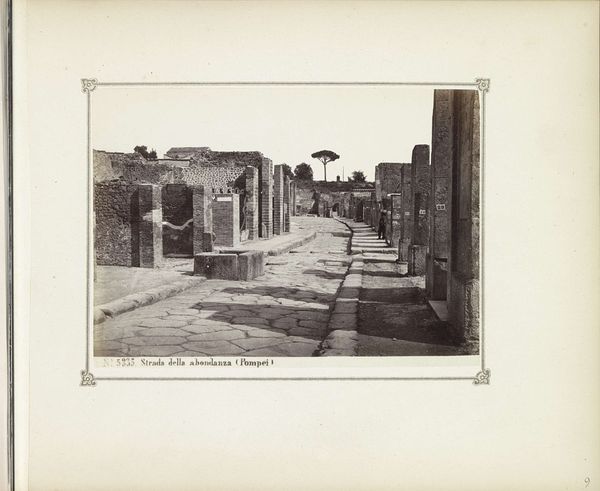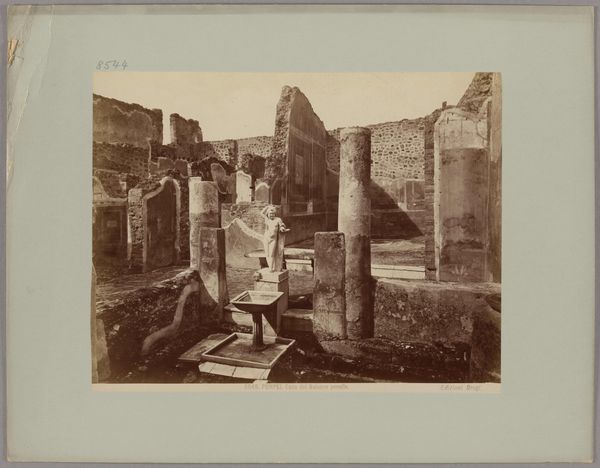
photography, site-specific, albumen-print
#
landscape
#
photography
#
ancient-mediterranean
#
site-specific
#
albumen-print
Dimensions: height 198 mm, width 248 mm, height 241 mm, width 328 mm
Copyright: Rijks Museum: Open Domain
Editor: Here we have Fratelli Alinari’s photograph, “Temple of Apollo in Pompeii,” dating from around 1880 to 1895. The albumen print captures the ruins with a somewhat melancholic and romantic gaze, I think. The stark light and shadow emphasizes the site's desolation, even its former grandeur. What strikes you about this photograph? Curator: I find the Alinari brothers’ project of documenting Italian heritage fascinating from a cultural perspective. Photography at this time wasn’t just about capturing a visual likeness; it was about constructing a national identity. Consider why Pompeii, a ruin, becomes such an important symbol. Editor: So, the ruins weren’t simply a historical record? Curator: Exactly. The excavation and subsequent photographic documentation of Pompeii fed into a narrative of Italian origins, linking the relatively new nation-state to the glory of the Roman Empire. Photography made this accessible, mass producible, cementing the image of antiquity in the public imagination and shaping political agendas. Notice how the composition romanticizes the ruins? Editor: It does present a specific point of view, doesn't it? Like they were deliberately trying to frame it in a certain way? Curator: Precisely. Alinari and others weren't neutral observers; their work was commercially driven and also served the political purpose of visually constructing a shared past. These photos circulated widely and served to build an idea of Italian identity rooted in classical grandeur. This image performed cultural work far beyond mere documentation. What do you think knowing all this tells us about cultural heritage in general? Editor: That’s a fascinating point. So much of how we understand the past is mediated and shaped by these sorts of conscious and unconscious choices. Food for thought! Thanks for this new perspective!
Comments
No comments
Be the first to comment and join the conversation on the ultimate creative platform.
